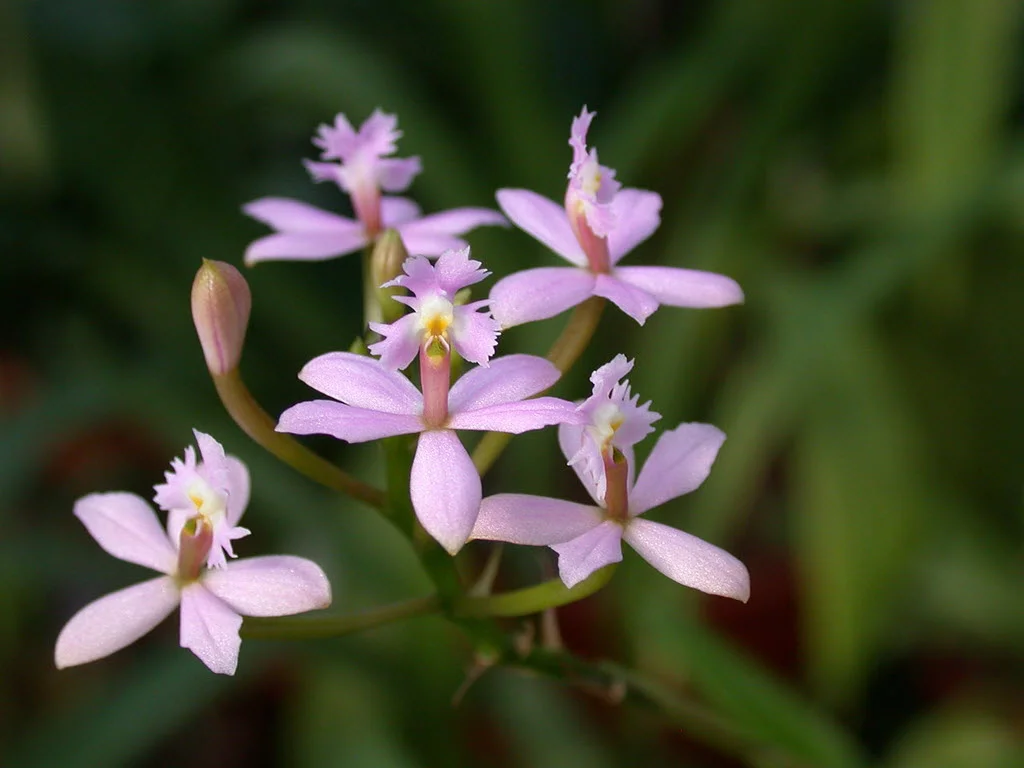Table of Contents
Pronunciation: coke-lee-ANN-these
Other Names: Shell Orchids
Introduction
Cochleanthes orchids stand out due to their large fan-shaped light green foliage combined with their large, shell-shaped showy flowers that typically come in bright white with a lavender hue.
Cochleanthes discolor x amazonica
This orchid can grow rather large, and its leaves can be up to a foot long with the single flowers being around two inches across. There are only four orchid species in this small genus, and they're native to Mexico, South America, Central America, and the West Indies.
Temperature
Despite being from regions with slightly warmer weather, these orchids like their temperatures to stay between 65°F and 70°F (18°C to 21°C) during the daytime hours. The nighttime temperatures can drop down between 50°F and 55°F (10°C to 13°C) comfortably. Additionally, these orchids are able to withstand significant temperature fluctuations, but they don't do very well if your temperatures get above 85°F (29°C).
They won't tolerate freezing temperatures without damage though, so you should plan to bring them indoors if you live in an area that regularly falls below the freezing mark of 32°F (0°C).
Light
In addition to the cooler temperatures, these orchids also prefer lower light levels than many other species. You can set them in an east-facing window, so they get the morning sun if you live in the northern hemisphere. This way, they'll get shade for the majority of the day.
If you're concerned that your orchid won't get enough light, you can also substitute fluorescent lighting to help them along. You should set your orchid 18 to 24 inches away from the fluorescent lights to ensure optimal growth conditions.
Water and Humidity
Cochleanthes like a lot of water, and they don't like it if their roots dry out. You'll want to water this orchid at least every three days or sooner if you notice that it's getting dry. If you have a plant label, you can push it down into the pot until it touches the bottom. Pull it out and feel it to see if it's damp or look at the potting medium that is on it. If it's damp, don't water it. Their ideal humidity levels range from 50% up to 70%, and they're generally happy anywhere in that range.
Feeding
For your fertilizer, you want a 20-10-20 mix. Before you give this to your orchid, dilute it by placing a half of a teaspoon of the fertilizer into a gallon of water. During the summer months, you want to fertilize your orchid once per week and be sure to flush it out thoroughly between fertilizer applications to prevent buildup.
During the winter months, you can cut back to fertilizing every other week, and flush it out once a month. This fertilizer mix will give your orchid the support it needs to grow rapidly during the spring and summer months.
Potting
Your potting medium should be a water retentive mix to ensure that your orchid stays as moist as it needs to between watering periods. The potting medium should have a good mix of sphagnum moss, fine fir bark, and cocoa husks. You can also do a potting medium of straight cocoa husks.
Every two years, you want to repot your orchid to refresh their growing medium and to prevent any excess fertilizer buildup. You should try to repot your Cochleanthes in the early spring months when it is just starting to show signs of new growth.
Video
Wade's Orchids talks about the Cochleanthes Discolor 'Mendenhall' and the care tips for it. Wade knows his orchids so take a listen.
In caring for orchids, you need to be sure that you can replicate a plant’s environment. Scroll through our list of orchid varieties to find out which plant is the best match for you.
See More Orchid Varieties











